Counter-Strike
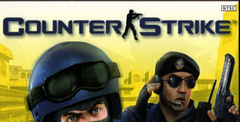
| a game by | Microsoft |
| Platforms: | XBox, PC (2000) |
| Editor Rating: | 8.1/10, based on 4 reviews, 6 reviews are shown |
| User Rating: | 8.8/10 - 8 votes |
| Rate this game: | |
| See also: | Download First Person Shooter Games, Counter Strike Series, Games Like SWAT 4, Games Like Half-Life |
Reducing the appeal of Counter-Strike to mere numbers is easy for me, so I will. At weekends, almost 250,000 people take to their copy of Steam for a game, and an incredible 75% of them - more than 150,000 players - choose Counter-Strike. This astonishing figure is one of the main reasons the title has had so few revisions since those early betas of the late '90s.
The initial release appeared in the summer of 1999, not long after Team Fortress Classic and around the same time freak temperatures in Britain had PC owners canceling barbecues and staying indoors to play computer games instead. The strange Counter-Strike mod for Half-Life a few hundred people downloaded was a rather anorexic affair, not so far removed from the game on which it was based. It had fewer than 10 weapons, three or four bug-ridden maps (none of which survive today) and hostage rescue was the only gameplay mode.
Counter-Strike was also a far less hardcore experience than it is now, the game's customised Quake engine roots clearly visible behind all the stuck-on realism. Early code allowed players to leap and fire while remaining as accurate as if they were crouched behind a crate, and the slightly random prices in the Buy menu, not to mention skewed weapon balance and complete lack of grenades and a round timer, meant that games either lasted forever or were 45-second massacres. And while hostages in Counter-Strike have never been smart, before Beta 3 they were so stupid that even the rescuers exterminated them.
Updates came thick and fast though. In the six short months between June and November of 1999, Counter-Strike turned into the game everyone now knows. The more baffling aspects of play had been refined or retired, maps were tuned to the point of perfection and loopholes like gunrunning (where weapons from corpses could be carried back to your team's respawn point for use the following round) were closed. The mod also gained brand new maps, extra weapons, plus a "new gameplay scenario involving C4 bombs". Yes, it was at this time that arguably the most famous gaming arena of all time, de_ dust (the 'de' prefix in the name short for 'defusal') made its entrance, as di'd the likes of deprodigy and denuke.
Over 36 months, 26 finely fettled updates made Counter-Strike almost perfect at which point a line was drawn and version 1.6 of the game was left in the care of an adoring community. It would be two years until the release of its only major revamp. In 2004, almost five years to the day after Beta 1.0 first appeared, Counter-Strike: Source was released. This was essentially a remake of the last version of the original CS game, taking advantage of the Source engine's graphical superiority and lifelike physics. As well as finally getting a realistic look to match its realistic objectives, players now found themselves able to move objects about barricade doorways with chairs and tables, and create cover with whatever objects they happen to find lying about any of the reworked maps.
Initially, the cosy, quick-loading familiarity of the original proved too much, and few players switched to the Source version. While the former was angular and dated, it would still run on a $25 car boot sale PC, and the sheer number of maps, gameplay styles and server mods dwarfed those of its successor.
But when Valve's regular updates began to provide serious gameplay enhancements - an improved radar, anti-cheat system, voice comms, dynamic weapon pricing and support for 5.1 and 7.1 speaker configurations -the old-timers begrudgingly made the switch. Today, the populations of Counter-Strike and Counter-Strike: Source are roughly level, a testimony to the charm of the original and Valve's determination to make the Soorce version the same but better.
Now that Valve are busy on both Half-Life: Episode 3 and Left 4 Dead, the follow up to Counter-Strike is apparently a long way off. In interviews, Gabe Newell has said that Left 4 Dead will appeal to Counter-Strike players, and a sideways glance at screenshots reveals the two could be related. Whether a community of people hooked on hostages and plastique will find much appeal in a survival horror with cliched monsters and plot is not yet known, but Newell has always maintained that if there ever was a Counter-Strike 2, it would never be anything predictable. It couldn't be... could it?
Download Counter-Strike

System requirements:
- PC compatible
- Operating systems: Windows 10/Windows 8/Windows 7/2000/Vista/WinXP

System requirements:
- PC compatible
- Operating systems: Windows 10/Windows 8/Windows 7/2000/Vista/WinXP
Game Reviews
Game That Changed The World
Prone To crashing, maps that simply wouldn't work, woefully unbalanced gameplay and just a handful of loyal fans fighting for the cause, the early weeks and months of Counter-Stake's troubled life could so easily have been the last, and the game could have ended up, as too many game modifications do, as another promising idea that was never realised.
Today those 100-odd fans number nearly two million die-hard regulars and Counter-Strike, three and a half years since the first version was released onto the Net. isn't only the most enduring mod ever made, it's the most popular first-person game in circulation and has been for most of its relatively lengthy existence. Despite its age and against the continuing sabotage from the hundreds of hacks and cheats, even at the unfashionable time of a typical midweek lunch hour here in the UK. close to 80,000 people across the world are playing the game. To put that figure in perspective. Unreal Tournament 2003. the latest big-budget shooter, has just 3.000 fighting its cause, a figure matched only by both Medal of Honor and Quake III Arena. And just to hammer home the point, of the top 40 games played online (excluding Everquest and its beardy-weirdy goblin friends) Counter-Strike players number more than the other 39 games combined. A leading business magazine recently reported that across the globe 2.4 billion minutes every month are spent in front of Counter-Strike (80 per cent of those inside de dust), while 2.9 billion minutes are spent watching Fnends. Pretty impressive for a game created by an unpaid student.
In The Navy
The Counter-Strike story begins in 1997. Then, it was the original Quake that was the FPS of choice, yet after the success of Doom s multiplayer game, people wanted more than a series of deathmatch levels. Thanks to the open-architecture of Quake's code and the availability of tools with which bedroom' artists and programmers could tweak id Software's existing code, new gameplay styles and themes were being exploited like never before. Team Fortress was the first big homemade conversion to beat the original game in the rankings, allowing players to team up together, choose a specialist player class and raid the opposing fort to capture the flag and run it home. But it wasn't enough for Minh Le (aka Gooseman).
Counter-Strike's unassuming creator; he wanted something extra: Instead of nail guns and lightning bolts, he wanted to play with something more realistic - MP5 sub-machine guns. Desert Eagle automatic pistols, sniper nfles and grenades, with missions set not across fantasy-themed forts, or spacestations, but secret military bases, underground bunkers and urban ruins blighted by shellfire. Navy SEALS for Quake would be the beginning of his odyssey, followed by work on the Action Quake 2 mod (for Quake 2). another realistic-based conversion. With Navy SEALS 2 already in development with another mod team. Le began work on Counter- Termnst Forces early in January 1999.
Minh Le's sidekick on the project would be Jess Cliffe, who had previously founded a Jedi Knight multiplayer website and one for Action Quake 2. They met, as most mod developers do, in an IRC chat room and Cliffe was immediately attracted to the idea of a realistic team-focused game based on the Half-Life engine and he quickly offered to create and develop the website for the game. Though his role on Counter-Strike wasn't a purely technical one, he would provide a foil for Le to bounce ideas off, his first contribution being the change of name to Counter-Strike.
Model Behaviour
With a raft of ideas, the only major stumbling block was with Half-Life itself. Barely four months old, its creators Valve Software had yet to release the software development kit (SDK); the tools with which anyone contemplating creating new models, weapons and gameplay styles would need. Until they arrived all Cliffe and Le could do was make plans and discuss ideas, while Le got to work creating player and weapon models and animations that he could slip into the game when the SDK arrived. Despite being a self-confessed slow worker, he progressed rapidly.
Development on Counter-Strike was actually easier than on Navy SEALS and Action Quake because of all the experience I had acquired from working on those two projects, Le recalls. To give you an example of how much more efficient I was, on Navy SEALS it took me about two months to make one weapon model, whereas I would be doing a model in about a week by the time I was working on Counter-Strike. And working on those previous two projects gave me the experience necessary to produce graphical content of a standard of quality that wasn't vomit-inducing. Thanks to his acclaimed work on Action Quake 2, Le had already made quite a name for himself on the modding scene and pictures and animations posted on the newly-opened Counter-Strike website ensured people took an interest as soon as material appeared online, some visitors even convinced the CS duo were in the employ of Valve, such was the excellence on show.
Over the course of the next three months, as he picked his way through the newly-released Half-Life SDK, Le began implementing the ideas that would provide the foundations for what we recognise as Counter-Strike today; having specially-trained counter-terrorist forces fighting against paramilitary underground cells, each with a cache of exclusive weapons.
The Weakest Link
The Counter-Strike duo soon realised that although they had a head start with some of the graphics (ripping them out of Half-Life's more realistic levels) and even though Le was storming through the characters, weapons and rules for the game, they were without maps to play the game on.
As soon as we needed maps, which was immediately, we had to draft people to help out on the project," remembers Le. Since we took a fairly lax approach to the map submissions, we were able to maintain control of CS's core game design. In other words, we didn't add any mappers to the core development team. Not initially at least." Eventually the first beta was released in June 1999, featuring just nine weapons, four maps and one gameplay scenano; hostage rescue. The maps were rushed (unsurprisingly) and generally poor, one didn't even work and the most popular was a direct conversion of a Team Fortress map (cs_siege). There were other problems too; though the winning team received a cash prize, the losers left with nothing making the game unbalanced in subsequent rounds, a problem compounded by the fact that dropped weapons disappeared from the map before they could be picked up. The player models were so similar players would inadvertently wipe out their own team and to top it off Counter-Strike liked to crash.
But even those frustrated enough to contemplate retiring from active service didn't have to wait long for a fix, as a week later beta 1.I was ready and friendly fire could be turned off and losing teams could expect a small cash prize for being beaten.
There were difficulties - mainly programming problems, but I never contemplated giving up. One of the luxuries of working by yourself is that you never have to rely on anyone else to motivate you. There's never a point where you're waiting for a co-developer to finish up a model, animation, texture, or piece of code. That period of waiting can really kill your motivation."
In Dust We Trust
Over the course of the next few months Counter-Strike was gradually fixed, improved and expanded. By September (beta 3.0) there were radio commands, new weapons and the now standard wait at the beginning of each round where players are rooted to the spot while they quickly buy weapons and ammo. By now most of the major bugs had been eliminated and the fan base was growing as a result with each new release. By November 1999 beta 4.0 was ready and it would see the biggest update to date, introducing not only a new style of gameplay, the now favourite bomb defuse mission, but also the map that would grow to become the most popular and recognisable piece of real estate in any computer game: de.dust.
As beta 4 was updated, the popularity of the game was almost becoming too much to handle. Emails were flooding in from across the globe, hundreds every day, and the demands of coding and testing were becoming a headache. Working alone has its perks but if you want to produce a game/mod of a high calibre, you really have to get yourself involved in a team," explains Le. For the purposes of creating a small mod (which Counter-Strike was at one point), you can get away with working alone but these days, it's kinda rare to see. especially if you want to compete with other games/mods."
The Valve Opens
By now Valve Software had caught more than just wind of the mod that had begun outranking its own add-on freebie Team Fortress Classic in the popularity stakes. Counter-Strike was the reason people were still buying and playing Half-Life and Valve, aware that after a year sales should be dropping rather than going ever upwards, decided to buy into Counter-Strike, contracting Canadian developers Barking Dog (now swallowed up by Rockstar Games) to work on the next major update, beta 5.0, improving the interface, adding new maps and weapons and introducing dozens of other improvements that today it would be hard to imagine playing the game without. It was a massive update and despite a few bugs, a great success.
As had increasingly been the case with every new update, beta 5.0 enraged some fans and pleased others. Rumours and reports of Valve's involvement invited some players to accuse the CS team of selling out and with the news in April 2000 that Counter-Strike would eventually be released to retail stores as a standalone game in its own right, fansites erupted in spontaneous fury. Some despised the idea that they might have to pay. others simply believed with a big name developer holding the reigns - even if it was the mighty Valve - that Counter-Strike wouldn't be the game it was intended to be. In actual fact it wasn't Valve that threatened Counter-Strike, but Counter-Strike's own unstoppable success.
That Sinking Feeling
Beta 6.0, released in March, aside from introducing two new gameplay modes (Assassination and Escape), seemed to herald a new era for Counter-Strike, one where it wasn't just counter-terrorists versus terrorists, but battles between those who simply wanted to play and those who wanted to win at any cost. With such massive popularity and a game based on open code, the number of cheats were many and the number of those willing to use them even more so. With each subsequent update release. Valve worked to counter the cheats, releasing new netcode in beta 6.5 and anti-cheat code. It seemed players were leaving in droves, sick of being spotted through walls, yet there were countless more players ready to reinforce them. The final round of beta code was the most curious, Le, now working as part of Valve, had one more feature he wanted in the game. Ahhh yes... that sad attempt at vehicles," he muses. Simply put, the engine just wasn't built for vehicles and it would have required far more programming prowess than I was capable of to make them work. I have not given up on the idea though, as I felt they were a wonderful addition to the gameplay - barring those times that they would spontaneously sink into the ground."
Official Version
After 17 months of what for any other game would've been a trying period, v1.0 of CS was released in the US as a game in its own right, a first for a total conversion and to the surprise of its creator, sales were good, even if the new animations made combatants look like they were wearing nappies under their fatigues.
I was initially concerned that people would not buy a product that was available for free, says Le, but much to my surprise there were a lot of people out there willing to support us and also people who didn't have Half-Life but wanted to get in on this Counter-Strike craze. Initially the fans did call us sell-outs but those cries died down. I guess people realised I develop games better when I'm properly fed and clothed.
Despite its US release, Valve and the CS team continued to support the version that relied on HL, and although the standalone game wasn't officially released in Europe, it has sold 1.3 million copies compared to Half-Life's 6 million. It's reported that Counter-Strike has earned publisher Sierra US $40m in revenue.
The Counter-Strike assault didn't end there of course, v1.3 brought in built-in real-time voice communication; v1.4 introduced Half-Life TV, where players could bring up in-game 3D maps and watch other players at the same time; then earlier this year Valve incorporated its Ricochet technology.
But the Counter-Strike story is far from over. Another update is just around the corner, new maps are constantly being released and when the singleplayer Condition Zero hits next year, its multiplayer game will fuse with CS. Who knows, in six months time the whole thing could be kicking off all over again. Initially, says Le, I was just hoping for a modest size fanbase. Something equivalent to what we had with Action Quake 2. When our fanbase grew past TFC's numbers I knew we might be onto something special. I never really knew it was going to be the number one online game, and when it was, I was skeptical about how long it would stay that away. I just never imagined it would be this massive.
I'm still highly motivated about working on the new CS game. The motivation has differed in the sense that when I was working on the initial version of CS1,1 wanted to see if people would enjoy this type of game. Now, having seen the success of CS, I'm motivated by an urge to prove to myself that CS wasn't just a fluke. And after that? And for my third product, I will be motivated purely by sex, drugs and booze...
When in-game trash talking pushed the wrong buttons, one player at an LA cyber cafe grabbed a screwdriver and killed a competitor. That same December day at another Southern California gaming center, a testosterone-charged tournament erupted into a 100-man riot involving hurled chairs, swinging pipes, and a pistol that left one teen hospitalized.
All this for a game started in a Vancouver basement? Without a doubt, Counter-Strike--which began as a fanmade add-on for PC first-person shooter Half-Life and ended up as one of the most popular PC games of all time--is a certified phenomenon. And this December, it's coming to an Xbox near you. Its rules are simple: Eight-man counterterrorist teams must coordinate to extract hostages, defuse explosives, and eliminate the opposition. Or you can choose to play as one of the eight bad guys if you're feeling sinister. If this sounds familiar, it should. Counter-Strike's influence is obvious in most of today's squad-based shooters for both consoles and PC.
Long before Navy SEALs set off to save the world, Counter-Strike immersed PC gamers in squad-based battles where a single well-aimed round can spell catastrophe, and the man watching your back matters more than anything. And with over 20,000 players online at any given moment, Counter-Strike for PC remains as popular as ever. But today, several years after its creation, can the game achieve the same success on a console? After all, if EverQuest taught us anything, it's that success on PC doesn't necessarily translate to the consoles. So, what sets this 5-year-old first-person shooter apart from the Halos and Rainbow Six 3s of today's Xbox?
Counter-Strike sits somewhere between realism and reflexes. The best of both worlds, it's packed with authentic weapons and environments, yet it remains fast paced. Unlike SOCOM or Ghost Recon where ample cover encourages drawn-out games of cat and mouse, CS's skirmishes are short and brutal--waste too much time searching for concealment in these comparatively small maps and a tango will shoot you dead. Success earns skillful squads cash to spend on deadlier arms--meticulously rendered to match the authentic articles--and better equipment. Developer Valve seems to have faith in this winning formula, since it has nixed its plans to include the single-player missions from Counter-Strike: Condition Zero for PC, allegedly so it can spend more time improving Counter-Strike's graphics and sound. "That includes adding higher-resolution textures and custom effects," says Director of Marketing Doug Lombardi, "as well as a complete overhaul of every world, character, and weapon model." And you'll still be able to improve your skills before going online by battling it out with A.I.-con-trolled bots on your own. In addition, the camaraderie that comes with taking your team to the top--that same esprit de corps perverted by gang mentality on that tragic winter day in California--should presumably carry over to Xbox Live.
Nevertheless, a few factors could keep the game from completely matching the success of its PC sibling. For one, PC owners can download the game for free (always a nice incentive). Second, the simple graphics that allow it to run smoothly on even low-end PCs are hardly an asset on Xbox, where, despite the enhanced horsepower, Counter-Strike still looks like an old game with an expensive face-lift. But if Counter-Strike does go big and you find yourself on the receiving end of grueling trash talk at a linked-system party, don't reach for the screwdriver. It's still only a game, man.
People say:
What there is of Counter-Strike is OK its a simple, decent online shooter. The problem is how little of it there actually is. With a measly two play modes and no real solo campaign, its hard to believe Microsoft expects anyone to pay $50 for what feels like one-third of a game. The one area Counter-Strike doesnt skimp on is the number of cool levels it offers: indoor, outdoor, banks, villages, Mayan temples theres a great variety of locations, all with plenty of interconnecting paths and nuances to learn. But, again, with only two modes to choose from (hostage rescue and plant-the-bomb), the game itself grows stale before the levels do. It doesnt help that single player is multiplayer, just with the computer A.I. controlling the other combatants. These bots are pretty smart (save for the occasional wall-humping hiccups), but playing by yourself gets repetitive within the first few hours anyway. I have minor quibbles with other aspects of the game. The controls are solid and easy to master, but for a shooter with such an emphasis on realism, the lack of some moves (like lean, lie prone, and crawl) seems a bit odd. Also, graphics and animation range from merely decent to poor. As the online multiplayer part of a kick-ass single-player game or with a buttload more modes or as a $20 budget title, I could recommend Strike. As is, there are just too many other quality shooters out there for anyone to waste their money on this.
If youve already liberated squad-shooter Rainbow Six 3 tram your local game store, dont bother securing Counter-Strike; its bare-bones, online-only (solo play with A.I. bots is a bore) tactical action makes it expendable in the war of the war games. Thats not to say its lean on gung-ho thrills the game unleashes a double-barrel blast of realistic weaponry and twitch gameplay. You will sweat bullets in many tense gunfights. But the fun fizzles fast. Counter-Strike needs more mission types, more weapons, more customizability it just needs more more. Most levels are blocky, blah, and look like they were made to run on a low-powered PC (which they were). Theres a reason Counter-Strike is free for PC. Microsoft should take the hint and qive this away with Xbox Live subscriptions.
As a Counter-Strike PC vet, I must admit that this Xbox port comes as a deafening disappointment. It isnt that I dont appreciate the new features console-exclusive maps and de facto voice chat via the headset but shockingly little has been done to improve (or evolve) Counter-Strike beyond its garage-gaming roots as a Half-Life mod on PC. Its still a landmark title, but this new version fails to incorporate advancements made by recent tactical shooters such as SOCOMII and Rainbow Six 3. That said, whats here is still surprisingly solid, from a gameplay standpoint. Great controls and a balanced weapon system make it instantly clear why Counter-Strike is the worlds most popular online shooter.
Striker's Guide
Coming from Quake or Unreal Tournament, Counter-Strike is a rude awakening. There are no health packs. No quad damage. You pay for your shooter and you pay for your ammo. If you catch a bullet in the wrong place, you keel over and die horribly. And there are no respawn rooms.
Tough? Yes, but we know what it's like to be a newbie. Here we show you how to get ahead when you're wet behind the ears.
1. The Tools
Don't pick weapons randomly. Acquaint yourself with three, perhaps four, guns and get to know them well: their ammo capacity, reload times, effectiveness through walls. If you can't afford the gun you're after, wait until the next round. Handing over moolah for a bad gun that you don't know is going to leave you dead - and skint.
2. Know How To Fire Them
Remember that guns such as the Colt M4AI Carbine will 'rapid fire' if you simply hold the trigger down. But stay away from such tactics when using artillery like the AK-47: don't let more than four or five rounds fly in any one go as your arm will waggle and your aim along with it.
3. Buy Grenades
Don't go throwing grenades in confined spaces, as often they'll simply bounce back and ' blow your knees off. Jump when you throw and they'll travel further. If you're using a concussion grenade, make sure you're ahead of your team mates before you lob it. Always keep a smoke grenade to hand: if you find yourself pinned down by unseen snipers, throw it close and make your break.
4. Stay Alive
Before scuttling off to find yourself a target, think. Don't walk into the middle of an open area. Move from cover to cover - from box to box, pillar to pillar - whatever. And keep checking behind you. Do everything slowly: very slowly.
Hold down the SHIFT key to walk and you'll not make footsteps. Hold CTRL when climbing ladders. Remember that audio is crucial to Counter-Strike tactics, and if you stomp around like a splayfooted rhino you'll end up on the mortuary slab. Use headphones if you have them; you can play all night without waking your beloved and you'll hear better, too.
5. Play Every Map And Every Team
It's a big mistake to stick to one team and one fave map. Sure, everyone loves Militia, but play it constantly as Terrorists and you'll never know what makes the Counter Terrorists tick - where they appear, where their cover is, and so on. Learn all the maps and pick your teams randomly.
6. Camp And Snipe
Sit still and wait for the enemy to come to you. It's frowned upon in titles such as Quake and Half-Life, but in Counter-Strike it's a way of life. Ignore the shouts of "Camper!" from clueless newbies. Think about it: if you really were a Terrorist, would you tackle your opponents head on or would you sit still with a sighted rifle and pick them off one by one?
7. Practice
The only way to become really good is to play the game often. To stay ahead of others you need to be deadly accurate with shots across all distances. And remember to go for the head: shots to the bonce are likely to be deadly.
Counter-Strike is one of the few wonders of the gaming world. Originating as an online mod for Half-Life, Counter-Strike quickly went on to become the online FPS of choice for many gamers. Even with it's aged graphics and (somewhat) aged gameplay, Counter-Strike is still the most popular online shooter. There are several factors to its success, such as it was free and the user-base for Half-Life was already high, but none greater than the fact that Counter-Strike provides a highly entertaining online experience. It only took five years, but now Xbox owners can finally see what all the fuss was about with Counter-Strike, a bare-bones port of the online classic.
Counter-Strike places two teams against each other: the terrorists and counter-terrorists. One team is given an objective, whether it 's rescuing hostages or planting a bomb, while the other team has to prevent the other team from completing those objectives. Counter-Strike has always had a fantastic balance between action and team-based play, allowing you to both run-and-gun and enforce team-based tactics. It's no different in the Xbox version -- everything that made the original Counter-Strike an online phenomenon is still here.
Unfortunately, Counter-Strike will be a definite case of too little, too late for most gamers. Aside from the voice-chat and enhanced visuals, there's little else to entice Counter-Strike veterans to the Xbox version. Xbox Live is absolutely needed to find enjoyment out of Counter-Strike since there's little else to it in the single player mode. No story, no setup, and no missions ' just the same Counter-Strike mode that you can find during online play, but with AI controlled bots. The bots can offer quite a challenge, but needless to say, yelling at the computer-controlled AI versus yelling at someone over Xbox Live isn't as fun.
Counter-Strike looks better than the PC version, but really, that's not saying much. Compared to most shooters on the Xbox, Counter-Strike is way behind the curve. Textures and animation both look like they don't belong on the Xbox, and environments are simplistically rendered. Granted, Counter-Strike veterans will likely overlook these problems if they've been able to play the same game for five years, but console enthusiasts might not be so forgiving.
It'll be a bit harder to overlook the audio problems though. Sound effects are solid, but the problem arises with the custom soundtrack option. Whenever a new match starts, the soundtrack will start over from the first song, meaning you'll be listening to the first few songs over and over if you play short matches.
There's no denying that the Counter-Strike formula still works and as such, is still a load of fun. It's just a shame that Xbox owners are only getting a slightly upgraded game that's over five years old. Veterans of Counter-Strike are better of sticking with the PC version, but Xbox owners looking for some solid online fun have another title to add to their 'To Buy'? list.
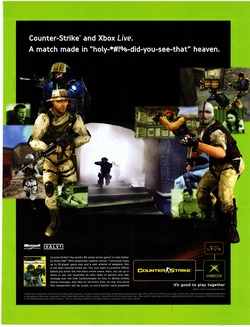
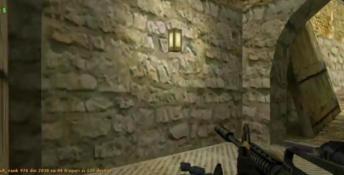
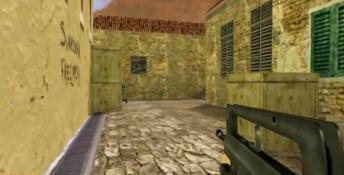

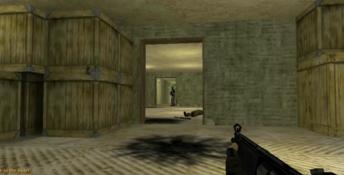
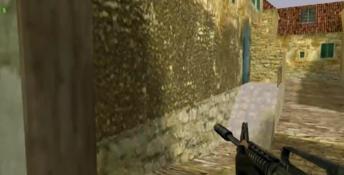
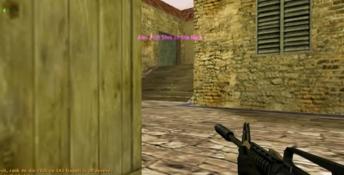


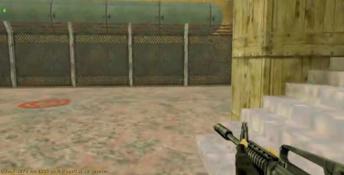
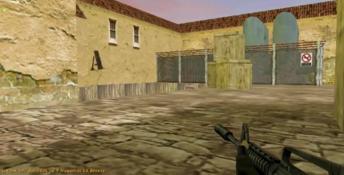
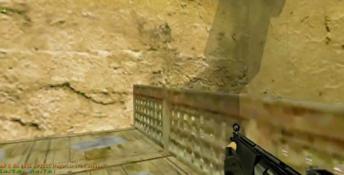
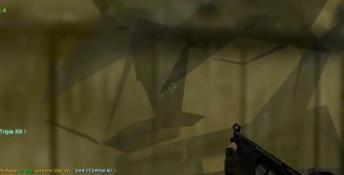
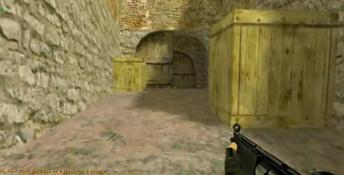



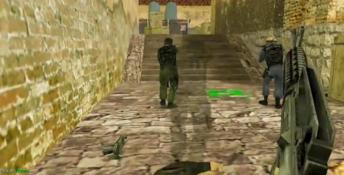
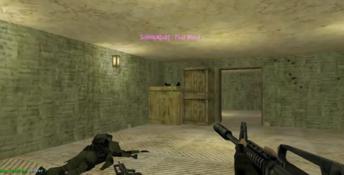
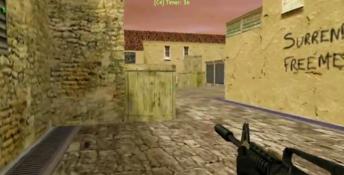
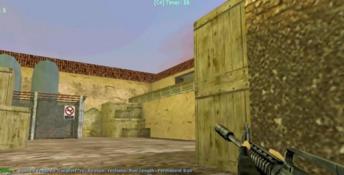
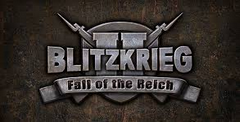 Блицкриг 2: Падение Рейха
Блицкриг 2: Падение Рейха
 ArmA: Queen's Gambit
ArmA: Queen's Gambit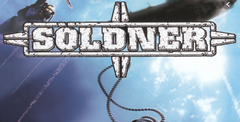 Soldner: Marine Corps
Soldner: Marine Corps Call of Duty: Ghosts
Call of Duty: Ghosts
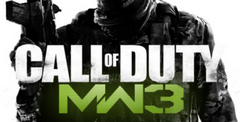 Call of Duty: Modern Warfare 3
Call of Duty: Modern Warfare 3
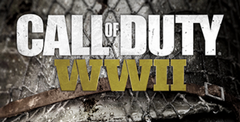 Call of Duty: WWII
Call of Duty: WWII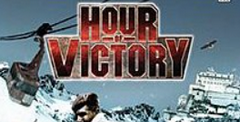 Hour of Victory
Hour of Victory
 Conflict: Vietnam
Conflict: Vietnam